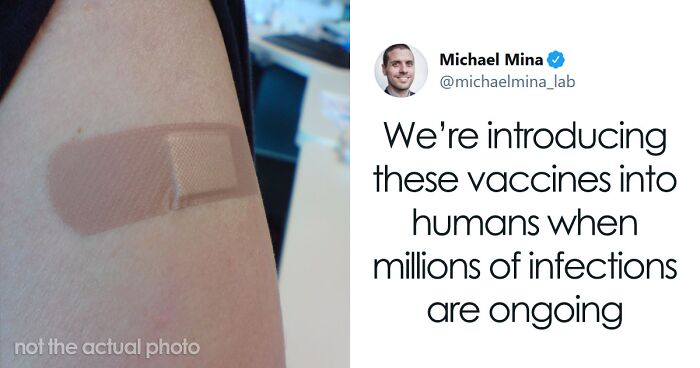
Harvard Epidemiologist Warns People About “Immune Escape” After New COVID-19 Vaccines
As already seen in a Google Trends infographic created by data analyst Roshaan Khan, the keyword vaccine has been the top trending search term starting in December. This was around the time vaccine efforts started becoming a reality and results were on the horizon.
In response to the many questions that he got regarding all of this, Harvard epidemiologist, immunologist, and physician Michael Mina went to Twitter to elaborate on why there’s also a great need for a contingency plan despite vaccines already reaching the public.
With COVID-19 vaccines just now reaching the public, it’s become a popular point of discussion on Twitter
Image credits: Army Medicine
Note that this is by no means a deep dive; the tweets are posted from the perspective of an infectious disease immunologist/epidemiologist from a study of viruses and vaccines. Second, the tweets do not aim to fear-monger or to be alarmist, so take it as food for thought.
An immunologist and epidemiologist joined the vaccine talk by pointing out the need for a contingency plan
References: @angie_rasmussen, @jbloom_lab, @K_G_Andersen, @BillHanage
Image credits: michaelmina_lab
He pointed out that today’s vaccines are too similar among each other, which isn’t good in case of mutations
Image credits: michaelmina_lab
Though it’s understandable that the first vaccines were rushed, future-proofing cannot be ignored
Image credits: michaelmina_lab
We can’t ignore the issue as it can hit at any moment—whether today or years from now
Image credits: michaelmina_lab
So, Mina suggests several steps to be included into contingency plans, starting with vaccine diversification
References: NY Times Opinion
Image credits: michaelmina_lab
Then there’s speeding up vaccine development and scaling up accessibility to rapid testing
Image credits: michaelmina_lab
He also provided some references and further reading to supplement his thread
References: Expert Letter
References: Michael Mina’s Tweet
References: Science Mag
References: New England Journal of Medicine
Image credits: michaelmina_lab
Needless to say, these solutions are on top of the current hand washing and physical distance methods
Image credits: michaelmina_lab
In short, Mina explained how mutations are a likely possibility—we already see it happening in the UK—so we can’t rely on this one very niche set of vaccines to keep the virus at bay. It hasn’t mutated to an extent that would cause alarm, but why risk it?
So, Mina proposes first diversifying the vaccines to include a more varied set of proteins for our immunity to be aware of and killed-virus vaccines (many are underway, though), among other variants.
Second, considering that the new variants have not yet escaped immunity but seem more transmissible, it is important to consider how current vaccine development could be sped up.
Lastly, there’s a need to scale up frequent accessible rapid testing for at-home, office, and school use. This should help slow the spread and would not be hindered by mutations.
References: Michael Mina’s Tweet
Image credits: michaelmina_lab
This is, of course, on top of the now-common precautions of wearing masks, keeping up to hygiene standards, and staying at home.
The tweet thread led to many people responding. For the most part, people were debating and asking questions—in fact, you can go and read through the response that Mina gave in the thread here.
Others also pointed out that it is necessary to also stress ventilation and aerosol spread as this has been a blindspot among many, and one tweeter also quoted a suggestion that the new mutations in the UK are isolated deals among single infected patients, so there’s no need to panic as it’s very manageable. Though this by no means implies that there shouldn’t be an appropriate response to this.
What are your thoughts on this? Let us know in the comment section below!
Laughing at the Trumptards rolling through and downvoting factual comments on here because they'd rather die for the angry orange than face up to the facts that their hero killed over 300,000 Americans. Downvote away, wankers! LOL!!!
I recently read a statistic that brought the reality home to me. Last year more than 1 in every 1,000 Americans died of COVID.
Load More Replies...Wow, I even got downvoted off the page! BTW, that one was a link to a science article verifying the origin of the cells used in research to create the mRNA Covid-19 vaccines, as well as in cancer research, other vaccines, and more. No, the vaccine isn't made of dead babies. Yes, the pope said it's okay morally. So... Please, rant away. The OP epidemiologist is predicting something that is, sorry, fear-mongering. He sees vaccines as pressure on virus to mutate like a movie monster. Most infectious disease updates at the hospital I volutneer at? Want mass vaccination. To stop the spread of the virus AT ALL. Now, downvote again, Trolls, but that won't change the facts!
Recently read that the vaccine is safe for most people with pre-existing conditions too. Yay.
Load More Replies...Given how this vaccine works, and how this virus is... built? I can't see this happening. As long as the virus has spikes and proteins, the vaccine will provide our bodies with instructions on defeating it. If the virus mutates to NOT having spikes, it will be less damaging, less infectious. Additionally, this vaccine could potentially help us fight off other corona type illnesses. Like the "common cold". Still, wear your mask after you've gotten one of the doses. And continue wearing that mask until numbers have gotten below pandemic levels! I know an epidemiologist who says we won't have a sizeable portion of the population vaccinated fully until at least summer, possibly as late as Thanksgiving 2021.
Mumbling I've heard indicates not to place bets in the US, at least, until December 2021. And I'll wear my mask, sanitize my hands, and all that just fine, thanks. :-)
Load More Replies...Trumptards are upset about facts not aligning with their idiotic view of the world. COVID is real, the economy is in terrible shape despite what the stock market is doing and Trumple Foreskin LOST THE ELECTION!
Load More Replies...I can't even rant coherently. "What if what if what if $$$$$$$" is the theme of OP to me. Mind, I am a volunteer in a rural hospital b/c we have no $$$ for anything, including personnel, and this is a medical HUMANITARIAN issue. People have no idea what the US is going through. The failures of 2020 were inevitable due to lack of infrastructure, extensive healthcare reforms, and political bickering that was placed above lives. Even now, it's about the $$$ in Congress. May they get infected chigger bites in all places the sun don't shine.
Totally agree. I don't understand why the slowness of the vaccinations is not on every front page.
Load More Replies...It's a bit odd how the up/down votes of nearly every post - AND reply - has a negative count. Perhaps one of those people doing the voting could share their thoughts on this story?
I swear this pandenic is starting to feel like a bad game of musical chairs. Sooner or later we'll all be infected.
There is a very real possibility that things will not "go back to normal" anytime soon. Also a possibility that living with covid19 is the new "normal". I'm doing the best I can to be happy and safe today - not waiting for something to happen that will solve my problems.
Things are never going to "go back to the normal" we were used to. They might eventually settle down to a new normal, but "back to normal"? Never.
Load More Replies...Geert Vanden Bossche theory is the same too...check him out....it’s already happening!
Oh FFS. He's a Harvard professor but couldn't find a better way to publish his opinion than threading 24 f*****g twitter posts?
Oh FFS. He's a Harvard professor but could find a better way to publish his opinion than threading 24 f*****g twitter posts?
Good - somewhat technical article on this concept and more from Nature: https://www.nature.com/articles/d41586-020-02544-6
Thanks for the link to a good article. It's a little stale (SEP20) but the information provided is still relevant.
Load More Replies...Just goes to show what a failure Trumple Foreskin is with refusing to be a leader. He could have been a hero (not just in his own mind) if he took this seriously and acted back in December 2019 when we first learned about it. Instead, the orange buffoon decided to politicize it and call it a "hoax" so we can lose one 9/11 worth of Americans every day now.
How do you read this and call it a "political claim"?? This guy laid out the validated data supporting the idea of wide-spread testing across the country. This isn't a (D) vs. (R) issue and anyone who CONTINUES to present it as one is a brainless jackass. The virus couldn't care less if you voted for Biden or Trumple Foreskin. If it has an opportunity to turn you into a vector then it will do so. How many Americans in BOTH parties have to die until you morons wake up and see it's impacting EVERYONE?
Load More Replies...Laughing at the Trumptards rolling through and downvoting factual comments on here because they'd rather die for the angry orange than face up to the facts that their hero killed over 300,000 Americans. Downvote away, wankers! LOL!!!
I recently read a statistic that brought the reality home to me. Last year more than 1 in every 1,000 Americans died of COVID.
Load More Replies...Wow, I even got downvoted off the page! BTW, that one was a link to a science article verifying the origin of the cells used in research to create the mRNA Covid-19 vaccines, as well as in cancer research, other vaccines, and more. No, the vaccine isn't made of dead babies. Yes, the pope said it's okay morally. So... Please, rant away. The OP epidemiologist is predicting something that is, sorry, fear-mongering. He sees vaccines as pressure on virus to mutate like a movie monster. Most infectious disease updates at the hospital I volutneer at? Want mass vaccination. To stop the spread of the virus AT ALL. Now, downvote again, Trolls, but that won't change the facts!
Recently read that the vaccine is safe for most people with pre-existing conditions too. Yay.
Load More Replies...Given how this vaccine works, and how this virus is... built? I can't see this happening. As long as the virus has spikes and proteins, the vaccine will provide our bodies with instructions on defeating it. If the virus mutates to NOT having spikes, it will be less damaging, less infectious. Additionally, this vaccine could potentially help us fight off other corona type illnesses. Like the "common cold". Still, wear your mask after you've gotten one of the doses. And continue wearing that mask until numbers have gotten below pandemic levels! I know an epidemiologist who says we won't have a sizeable portion of the population vaccinated fully until at least summer, possibly as late as Thanksgiving 2021.
Mumbling I've heard indicates not to place bets in the US, at least, until December 2021. And I'll wear my mask, sanitize my hands, and all that just fine, thanks. :-)
Load More Replies...Trumptards are upset about facts not aligning with their idiotic view of the world. COVID is real, the economy is in terrible shape despite what the stock market is doing and Trumple Foreskin LOST THE ELECTION!
Load More Replies...I can't even rant coherently. "What if what if what if $$$$$$$" is the theme of OP to me. Mind, I am a volunteer in a rural hospital b/c we have no $$$ for anything, including personnel, and this is a medical HUMANITARIAN issue. People have no idea what the US is going through. The failures of 2020 were inevitable due to lack of infrastructure, extensive healthcare reforms, and political bickering that was placed above lives. Even now, it's about the $$$ in Congress. May they get infected chigger bites in all places the sun don't shine.
Totally agree. I don't understand why the slowness of the vaccinations is not on every front page.
Load More Replies...It's a bit odd how the up/down votes of nearly every post - AND reply - has a negative count. Perhaps one of those people doing the voting could share their thoughts on this story?
I swear this pandenic is starting to feel like a bad game of musical chairs. Sooner or later we'll all be infected.
There is a very real possibility that things will not "go back to normal" anytime soon. Also a possibility that living with covid19 is the new "normal". I'm doing the best I can to be happy and safe today - not waiting for something to happen that will solve my problems.
Things are never going to "go back to the normal" we were used to. They might eventually settle down to a new normal, but "back to normal"? Never.
Load More Replies...Geert Vanden Bossche theory is the same too...check him out....it’s already happening!
Oh FFS. He's a Harvard professor but couldn't find a better way to publish his opinion than threading 24 f*****g twitter posts?
Oh FFS. He's a Harvard professor but could find a better way to publish his opinion than threading 24 f*****g twitter posts?
Good - somewhat technical article on this concept and more from Nature: https://www.nature.com/articles/d41586-020-02544-6
Thanks for the link to a good article. It's a little stale (SEP20) but the information provided is still relevant.
Load More Replies...Just goes to show what a failure Trumple Foreskin is with refusing to be a leader. He could have been a hero (not just in his own mind) if he took this seriously and acted back in December 2019 when we first learned about it. Instead, the orange buffoon decided to politicize it and call it a "hoax" so we can lose one 9/11 worth of Americans every day now.
How do you read this and call it a "political claim"?? This guy laid out the validated data supporting the idea of wide-spread testing across the country. This isn't a (D) vs. (R) issue and anyone who CONTINUES to present it as one is a brainless jackass. The virus couldn't care less if you voted for Biden or Trumple Foreskin. If it has an opportunity to turn you into a vector then it will do so. How many Americans in BOTH parties have to die until you morons wake up and see it's impacting EVERYONE?
Load More Replies...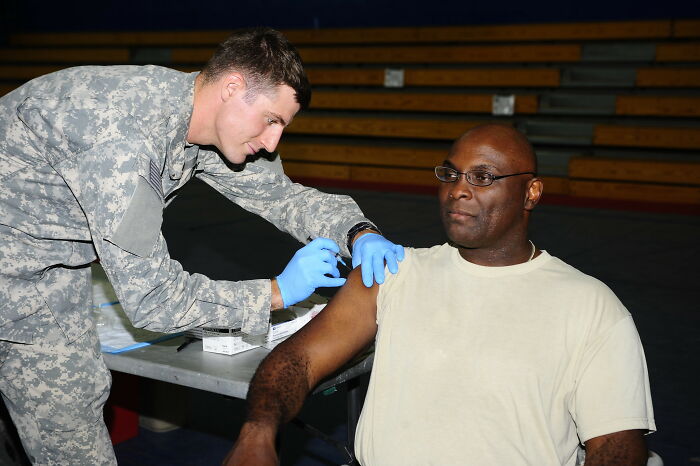
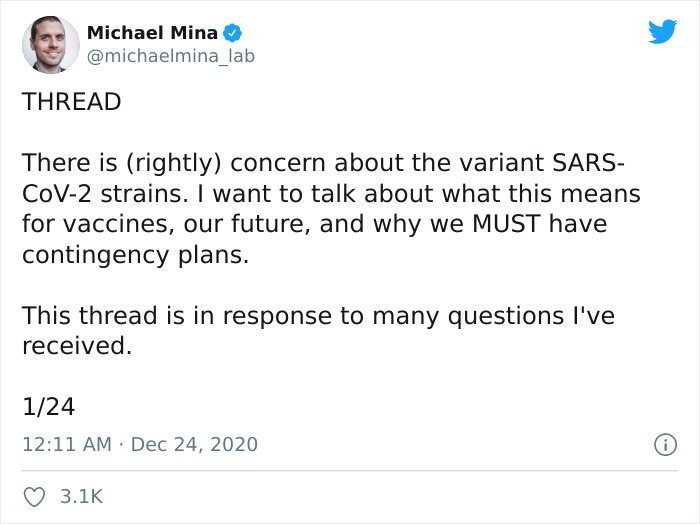
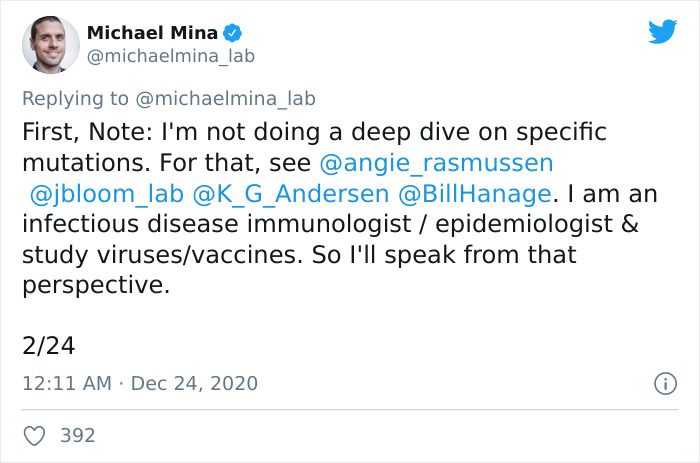
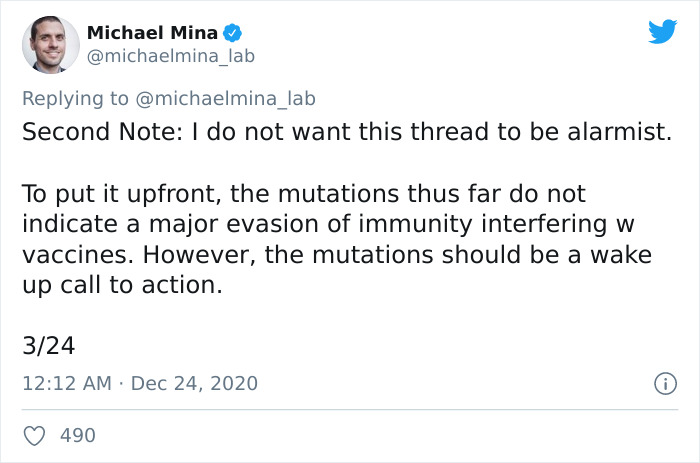
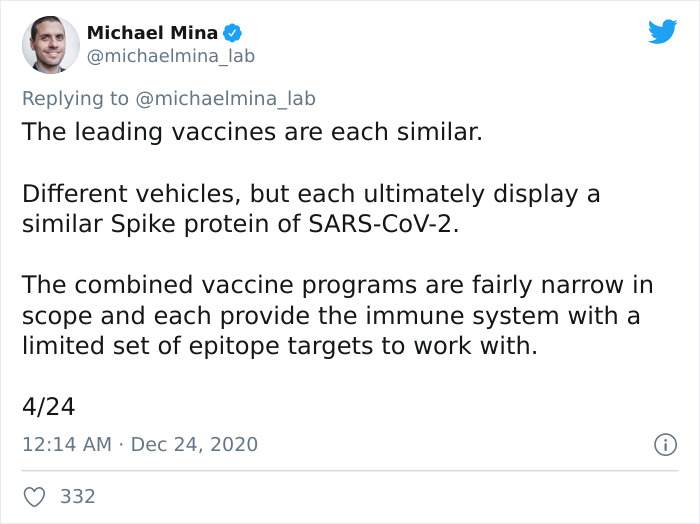
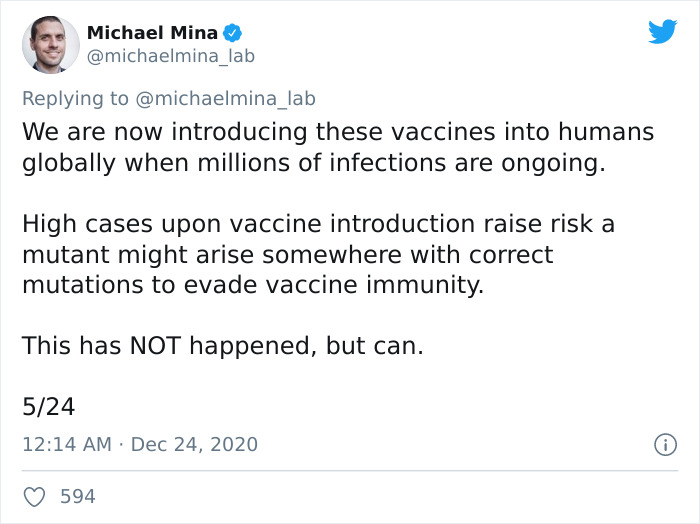
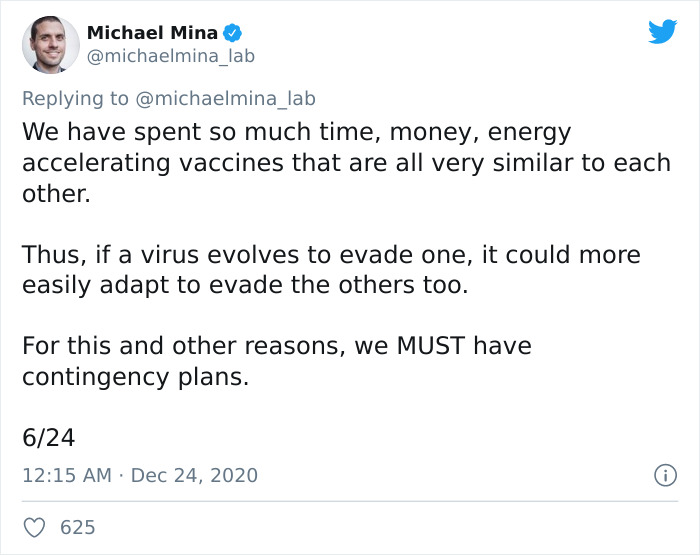
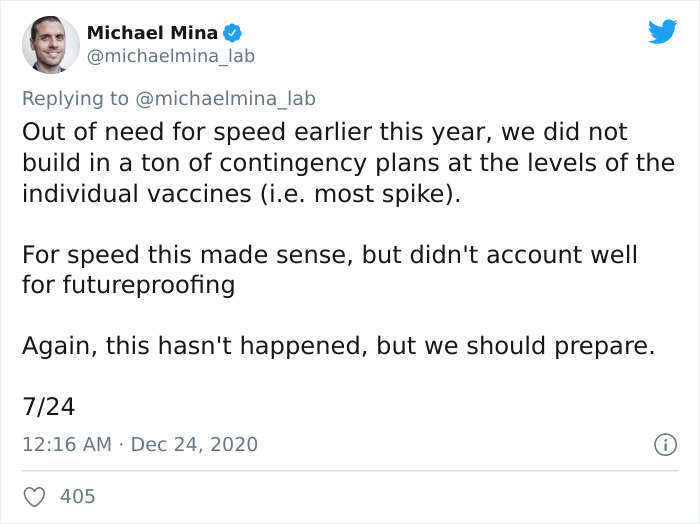
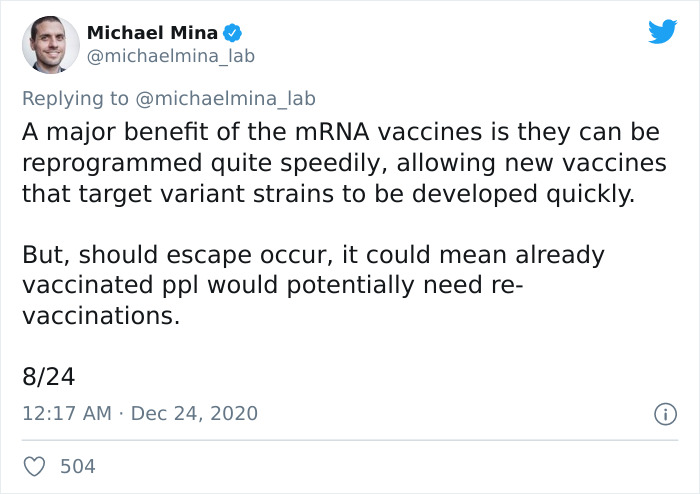
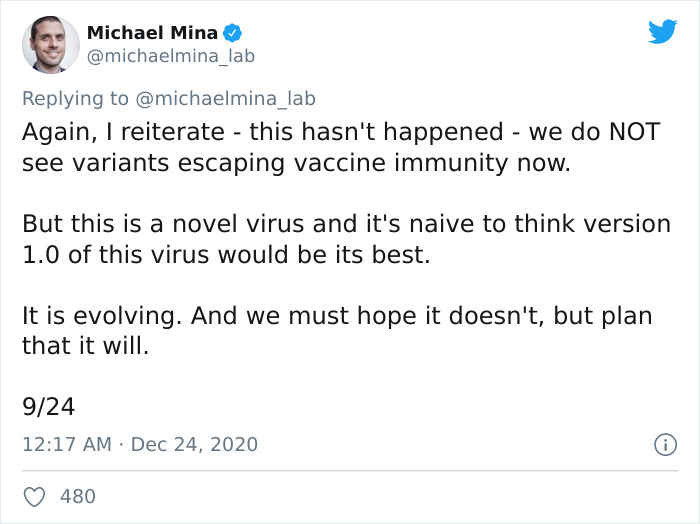
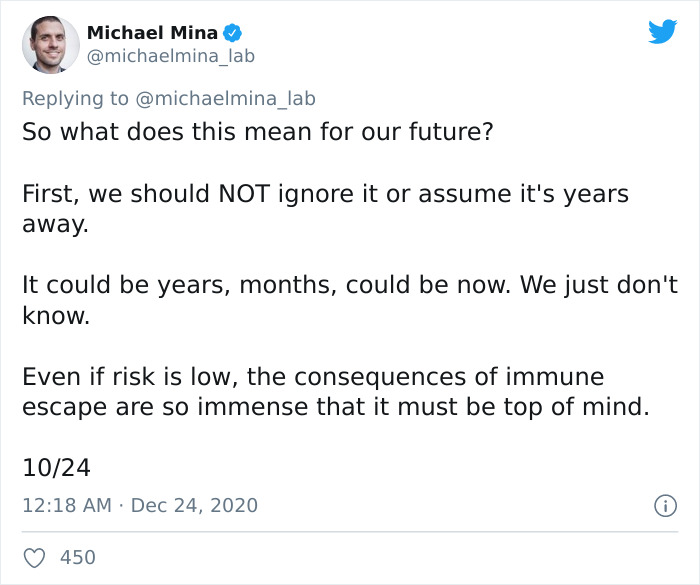
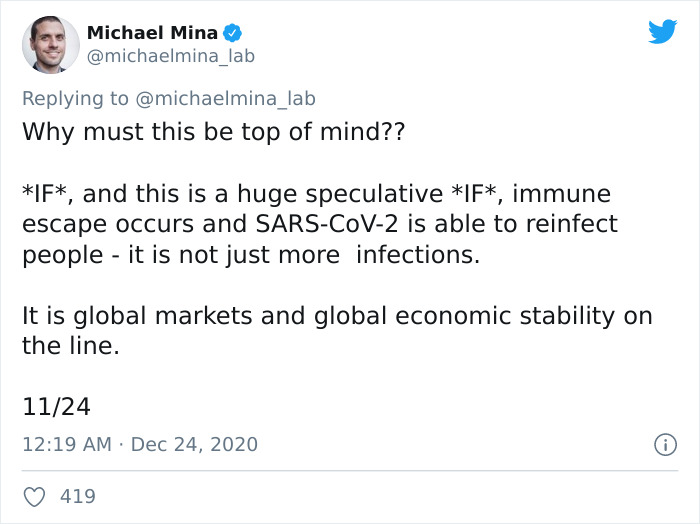
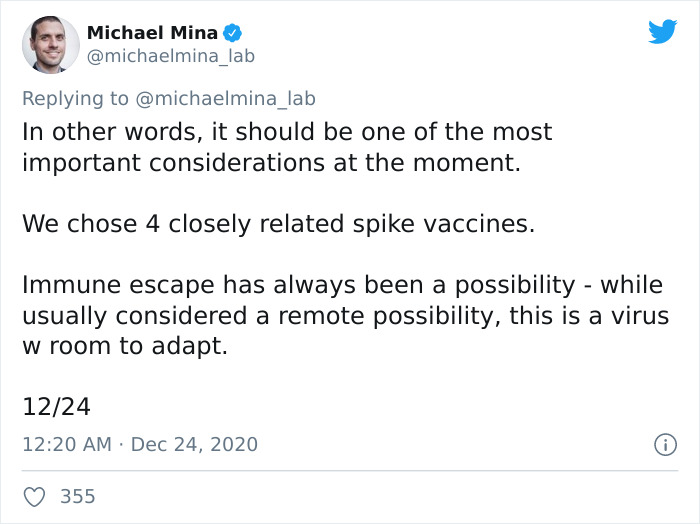
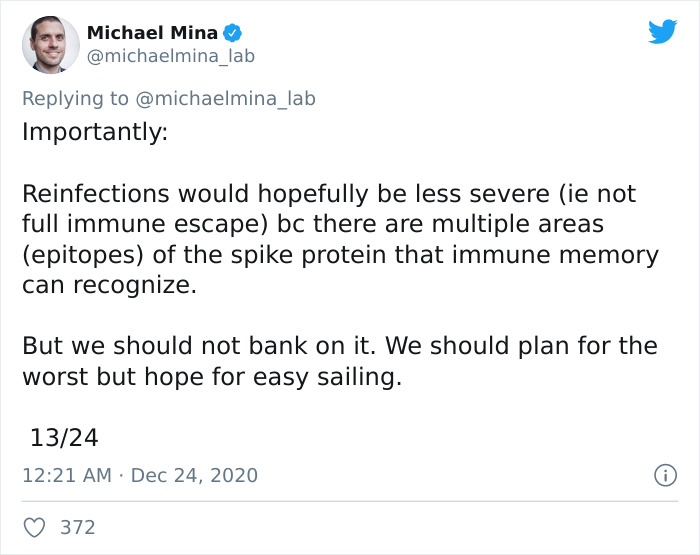
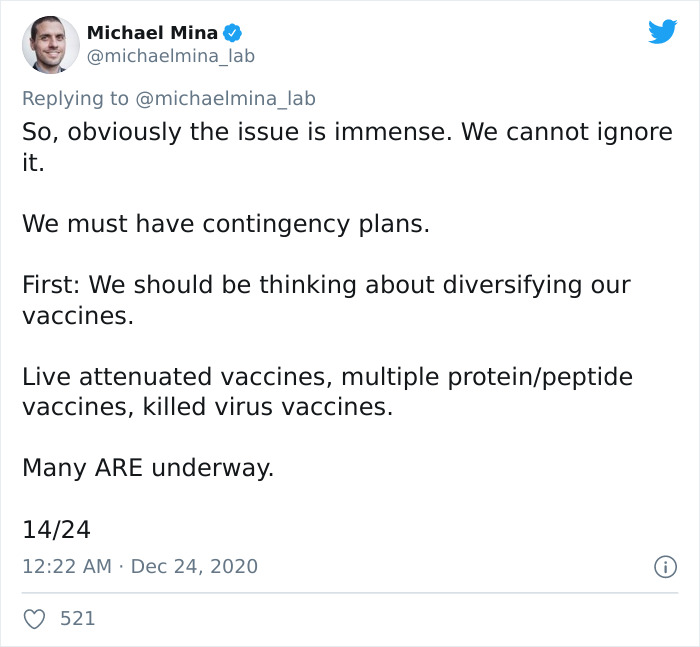
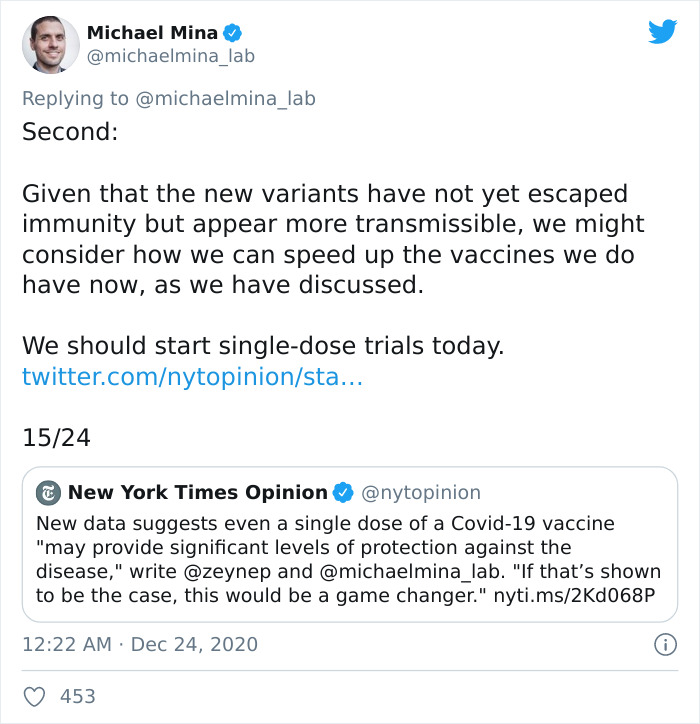
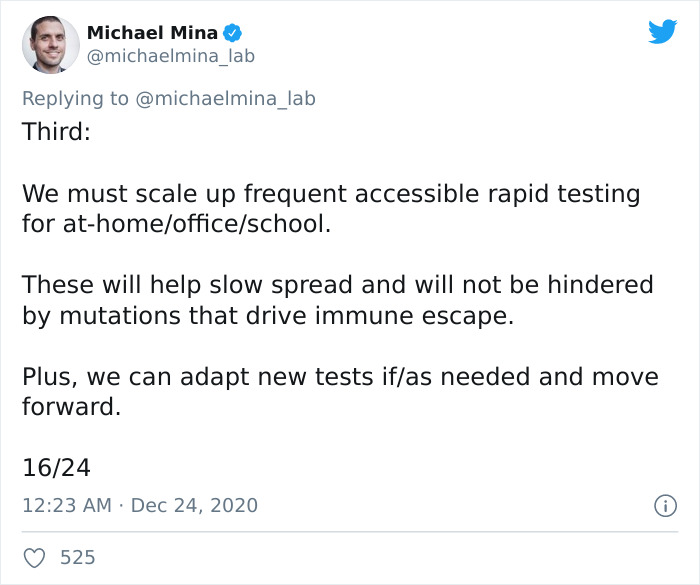
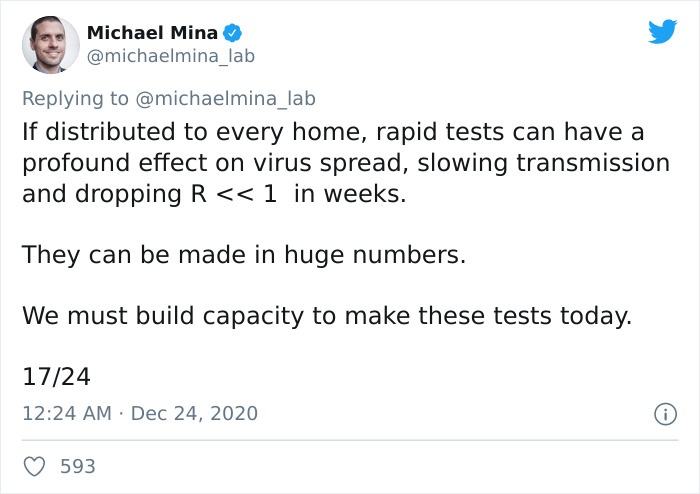
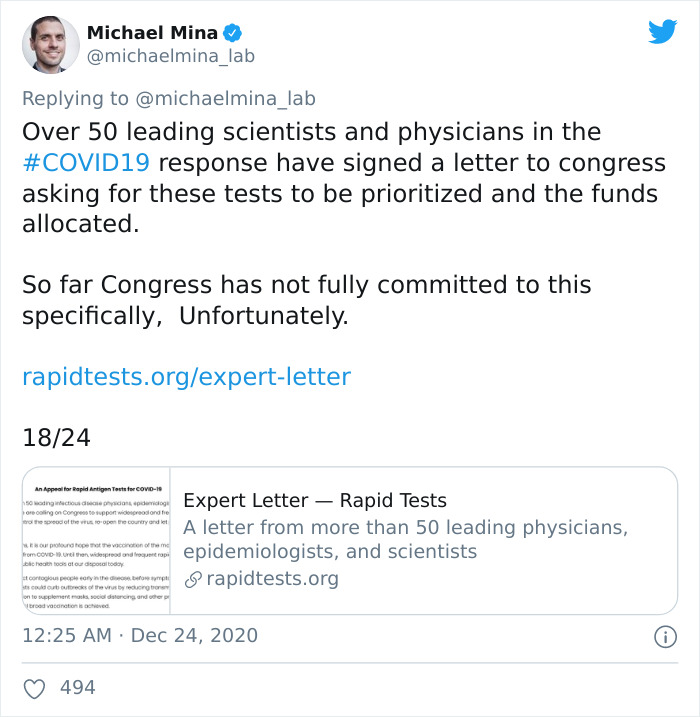
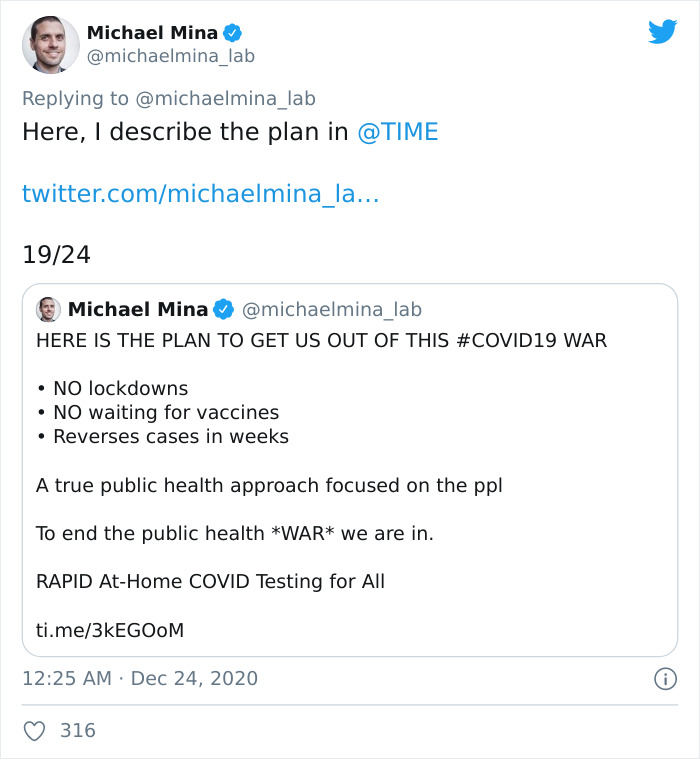
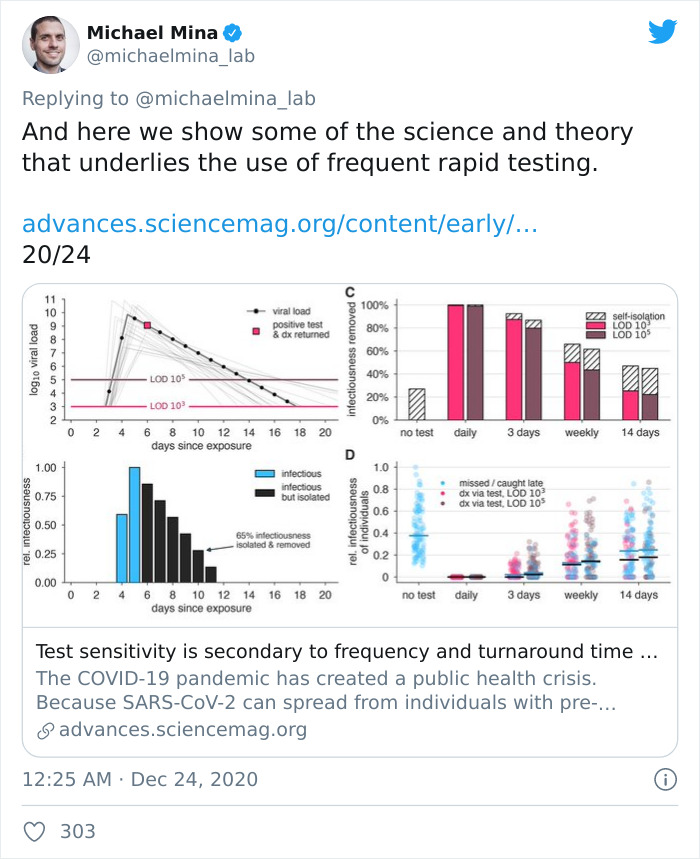
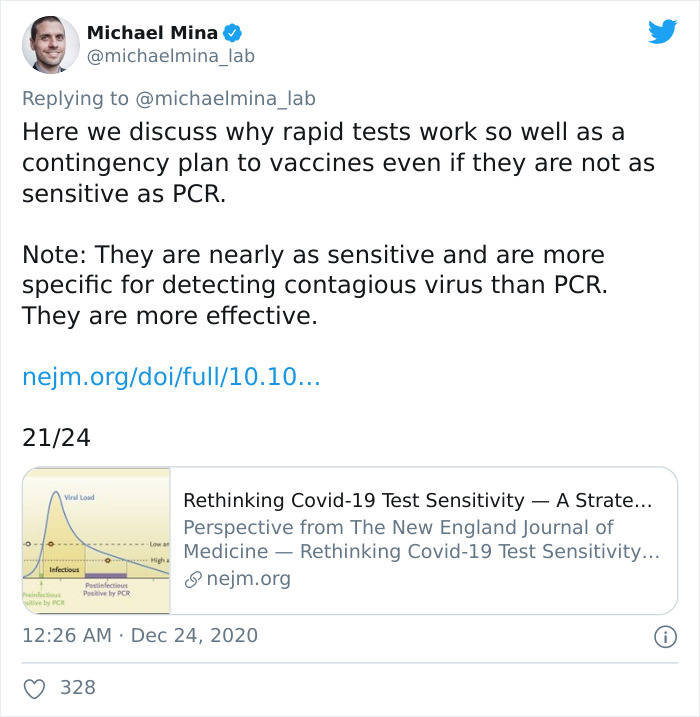
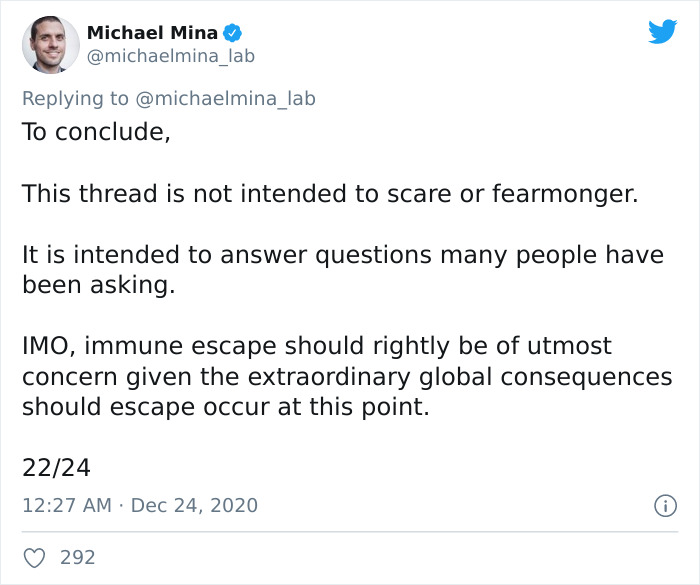
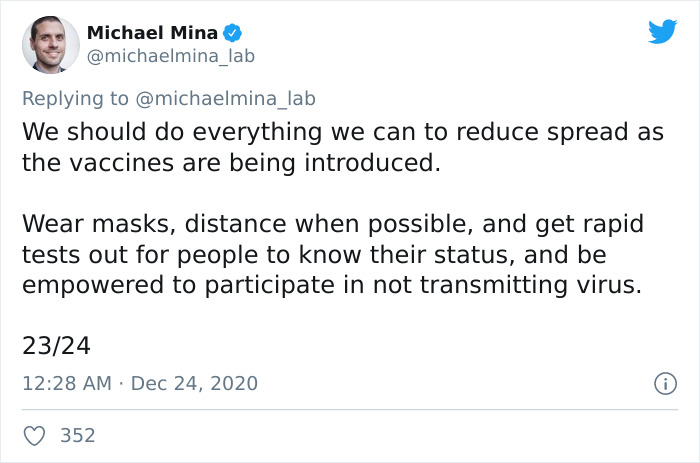
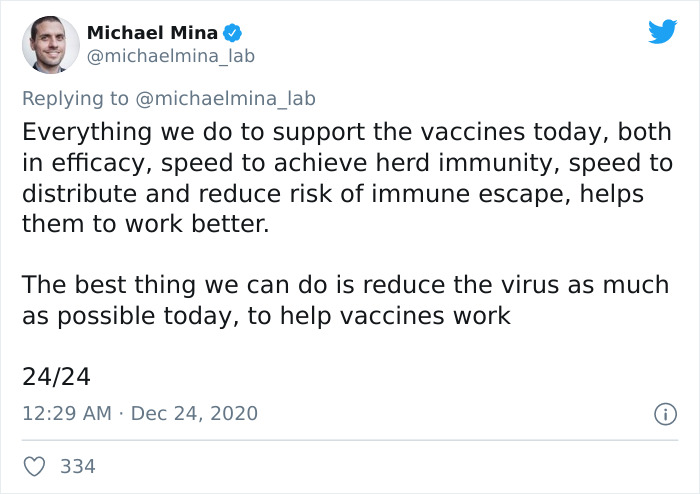
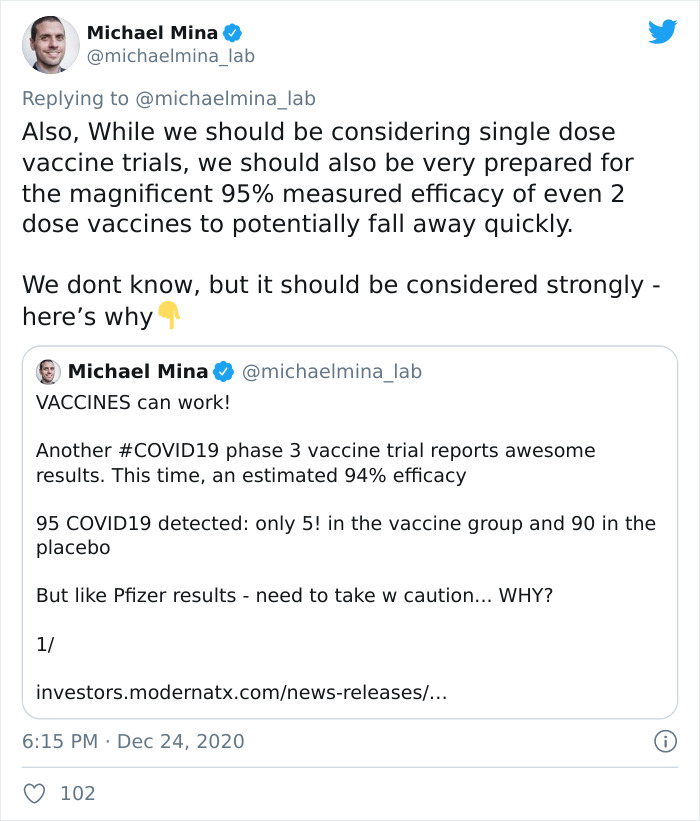



86
47